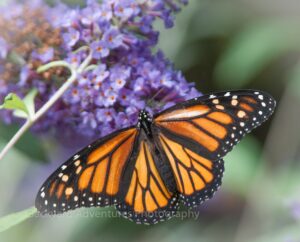 On these crisp, sunny, fall days we have had a dozen or more monarch butterflies hangin’ out in our backyard .They prefer to cluster on the purple buddleia bushes, which this late in the season are more like trees. We have really been enjoying the dance of the monarchs as they flutter overhead before they head off on their miraculous journey!
On these crisp, sunny, fall days we have had a dozen or more monarch butterflies hangin’ out in our backyard .They prefer to cluster on the purple buddleia bushes, which this late in the season are more like trees. We have really been enjoying the dance of the monarchs as they flutter overhead before they head off on their miraculous journey!
Through the years we have participated in tagging the monarchs in the fall season through the Monarch Watch program sponsored by the University of Kansas. Researchers use these tags to track the butterflies migration to Mexico. We’ve also raised monarch butterflies, both indoors and out in the wild. Butterflies lay their eggs on specific plants, known as larval or host plants. These plants meet the nutritional needs of the larvae or caterpillars when they hatch.(see New larval Plant-Hops blog 2/3/12)
The host plant for the monarch butterfly is milkweed. We introduced milkweed into our garden over 20 years ago. This is the milkweed plant, bordering our front railing. You have probably seen it growing along the roadside.In the fall, it has pods.The monarch also likes milkweed as a nectar plant.

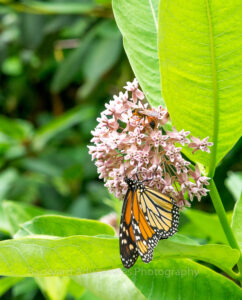
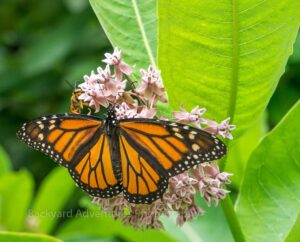
The monarch lays its eggs on the underside of the leaves. When the caterpillars emerge about 4 days later, they eat the leaves of the plant. When we used to raise them indoors in tanks, you could hear the caterpillars loudly munching on the leaves as they approached full size. They went through so many leaves, we would sometimes have to go foraging in the fields for more milkweed.

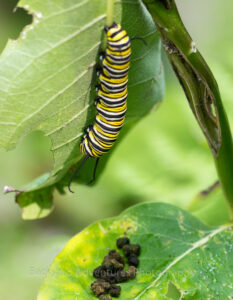 (When hunting for caterpillars, a sure way to find them is spotting the mess they leave behind!) After about two weeks, when the larvae are ready to pupate, they hang upside down in a J shape and form a chrysalis. The monarch chrysalis is a beautiful lime green with a line of golden dots. The butterflies emerge about 10 days later. As they emerge, their wings are pliable and wrinkled and their abdomens are large .They pump fluid from the abdomen into their wings until they become fully expanded. Within an hour or two, they can fly.
(When hunting for caterpillars, a sure way to find them is spotting the mess they leave behind!) After about two weeks, when the larvae are ready to pupate, they hang upside down in a J shape and form a chrysalis. The monarch chrysalis is a beautiful lime green with a line of golden dots. The butterflies emerge about 10 days later. As they emerge, their wings are pliable and wrinkled and their abdomens are large .They pump fluid from the abdomen into their wings until they become fully expanded. Within an hour or two, they can fly.

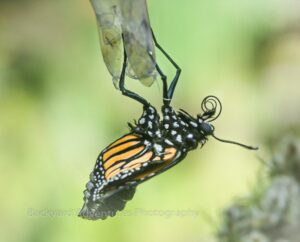


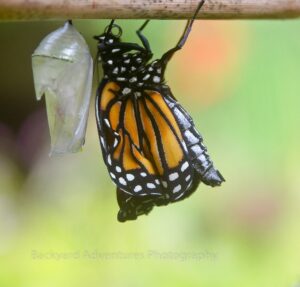
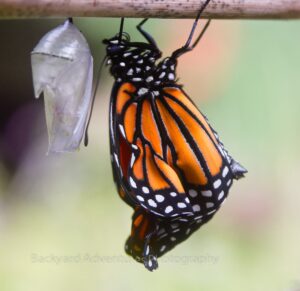
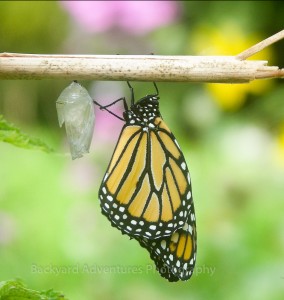



 This is the male monarch butterfly which has two oval black spots on the hindwings.On the female, the black veins appear thicker.
This is the male monarch butterfly which has two oval black spots on the hindwings.On the female, the black veins appear thicker.


Despite my husband’s complaint that I planted weeds in the garden, we have been successful in seeing the whole life cycle of the monarch right in our own backyard!